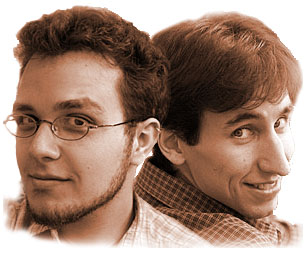
- Microscopes - our three Zeiss Universals (Tall, Dark,
and Handsome) are equipped with motorized XYZ stages from Applied
Scientific Instrumentation, as well as Sony IEEE1394 digital cameras
with 1280x960 resolution.
- Slide Handler (not yet online) : A robotic slide handler with a 600-slide capacity is currently in its final prototyping stages. We plan to build a slide handler for each of our three microscopes, resulting in access to a total of 1800 slides. Click here to see a photograph of Michael Connolly's first prototype; please note that the current slide handler has changed quite a bit from these homespun beginnings :-).
- Computer: Dell Optiplex - PIII @ 933 Mhz, 512 MB RAM, 2x40GB HD. Red Hat Linux 7.3
- Additional I/O: 8-port PCI RS-232 serial card from
ByteRunner for hardware device control, OHCI-compatible FireWire card
for camera interfaces. BayTech RPC2 for automatic illumination control.
- Mass Storage - Quantum SnapServer NAS; 480GB with RAID5 protection, for archiving image stacks.
The Software:
- Server Software
- Designed in-house, the iScope server software allows control of an arbitary number of attached microscopes.
- "Users and groups" authentication model with separate access rules for each microscope.
- When a microscope is idle, the system keeps the microscopes busy acquiring image stacks for remote stereology.
- Incorporates fiducial information from the Mouse Brain Library to ensure alignment between video and navigational aids.
- Client Software
- Simple graphical user interface for scheduling time on the system, controlling microscopes, and doing stereology on previously acquired image stacks.
- Available for Linux and Windows 98/2000/NT/XP/ME.
The People:

- Michael Connolly (left, handsome) wrote the iScope server software and Gumbo, the client software for controlling iScopes.
- Tony Capra (right, dashing) wrote Aria 3-D, the client software for online stereology, and helped to develop the iScope client-server protocols.
- Christopher Vincent (not pictured, mysterious) implemented the scheduling in Gumbo and squashed the great onslaught of bugs.
- Senhua Yu (member of Dr. Williams lab) currently developing and maintaining iScope server software, Gumbo and Aria 3-D, and contributed to Gumbo 2.2~ and Aria 3-D 1.2~. June 25, 2004